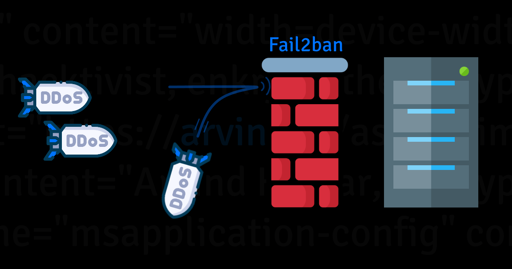I’m wondering if I’m starting to outgrow Tailscale… my wife keeps having networking issues on Android due to Tailscale, the Nvidia Shield kills the Tailscale app randomly, and my parents’ TV doesn’t have a Tailscale app…
I feel like the time is approaching to publicly expose some of my services to the internet…
Any other tips?



Yes, I run many services and website on the public web from my homelab. Harden your server first. Like disabling root ssh login.
Also enable auto updates on your server. Use your router/server to block some counties using geoip (especially if those services are meant for only a couple of people within your county maybe?). You could also use block lists, there any many bad ip lists out there.
Configure rate limits in Nginx.
You also mentioned fail2ban. You can define many rules and actions. Like blocking ips that might go over your previously defined rate limits. Or 4xx action for ips that request a lot of non existing pages (404 errors) .
Also captcha won’t cut it anymore today. Try https://github.com/TecharoHQ/anubis
Of course expose only what you want to expose, so only open ports in your firewall you really want to open. Ideally put everything behind a reverse proxy like Nginx.
Let’s start with all of the things mentioned above. Ping me later if want to know more or have questions.
Do you have any tutorials or guides on this handy?
Yeah, definitely all my users are in the same town/region/country as me. So this could be doable.
Hm, currently using Caddy as my reverse proxy. I guess there’s some module for this.
The only port I need open is 443 for accessing Jellyfin and Immich. I can definitely block 22 from the public internet. And fuck it no automatic redirects from 80 to 443. TLS or bust.
Caddy is also fine.
I wrote a blog about server hardining and you might find it useful: https://blog.melroy.org/2023/server-hardening/
Now that’s a deeeeep rabbit hole. I tend to go overboard on hardening and security, however, one good place to start is installing Lynis and run a scan. Lynis will spit out a rather extensive list of areas you need to harden or adjust and a score for your server. It will also give links where you can go and read up on the specific item in question. Now, not every one of the bullets in the list will apply, but you should give each careful consideration. Lynis is Free and Open Source Software (FOSS).
lynis audit systemI ran a scan just for demonstration purposes so you can see what the end results are. This is just a snippet:
spoiler
* Configure minimum password age in /etc/login.defs [AUTH-9286] https://cisofy.com/lynis/controls/AUTH-9286/ * Configure maximum password age in /etc/login.defs [AUTH-9286] https://cisofy.com/lynis/controls/AUTH-9286/ * Default umask in /etc/login.defs could be more strict like 027 [AUTH-9328] https://cisofy.com/lynis/controls/AUTH-9328/ * To decrease the impact of a full /home file system, place /home on a separate partition [FILE-6310] https://cisofy.com/lynis/controls/FILE-6310/ * To decrease the impact of a full /tmp file system, place /tmp on a separate partition [FILE-6310] https://cisofy.com/lynis/controls/FILE-6310/ * To decrease the impact of a full /var file system, place /var on a separate partition [FILE-6310] https://cisofy.com/lynis/controls/FILE-6310/Be mindful of where you get your hardening tutorials. There are hundreds of thousands out there. I would stick with authoritative sources.
ETA: I would also recommend reading up on Cloudflare Tunnels/ZeroTrust. I know some people are iffy about Cloudflare and I see their points. It’s worth a read in my opinion.